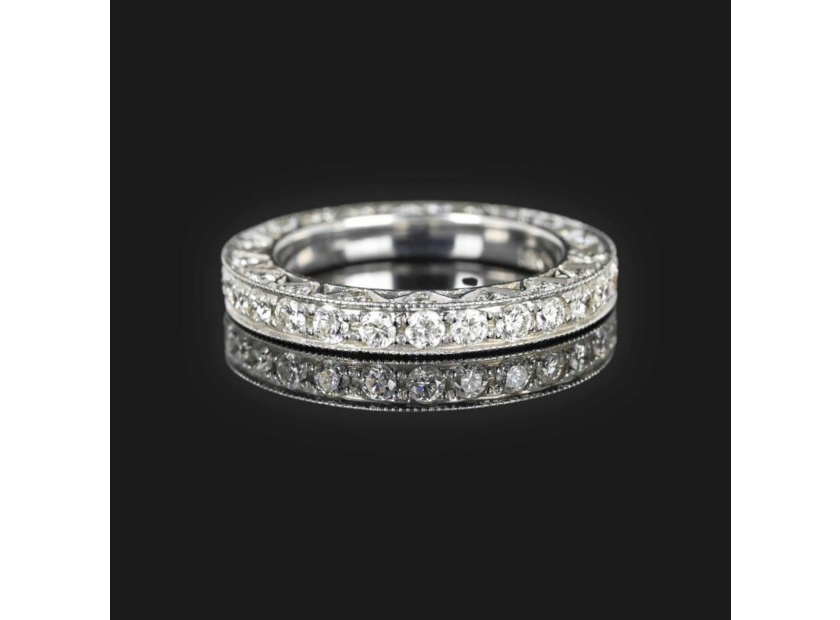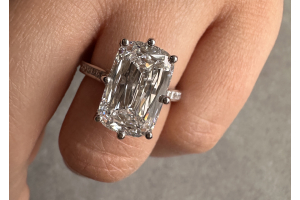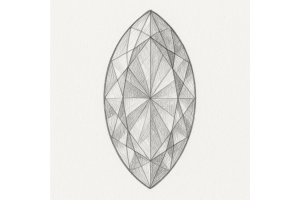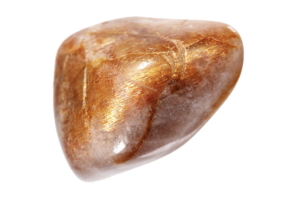GBP
/
GBP
/
Shipping to:
Currency:
Lab Grown Diamonds: Why They’re Disrupting the Jewellery Industry
Lab grown diamonds are making waves in the jewellery industry. If you've been keeping an eye on trends in sustainable luxury, you’ve probably noticed a shift towards these man-made gems. But what exactly is driving this surge in popularity, and why are they causing such a stir among consumers and jewellers alike? Let’s dive into why lab grown diamonds are not only here to stay but may also be the future of the jewellery industry.
What Are Lab Grown Diamonds?
Lab grown diamonds, as the name suggests, are created in a laboratory setting. Unlike natural diamonds, which form over millions of years deep within the Earth’s crust, these diamonds are made in a matter of weeks using advanced technology. The two primary methods for creating lab grown diamonds are High Pressure High Temperature (HPHT) and Chemical Vapour Deposition (CVD). Both methods result in diamonds that are virtually identical to natural ones, sharing the same physical, chemical, and optical properties.
Contrary to popular belief, lab grown diamonds are not "fake." They are real diamonds, just created through a different process. In fact, without specialised equipment, even a trained jeweller would struggle to tell the difference between a lab grown diamond and one that was mined. To explore some beautiful options, check out lab grown diamonds in the UK.
The Science Behind Lab Grown Diamonds
So, how does this science work? In the HPHT method, a small diamond seed is placed in carbon, and then subjected to intense heat and pressure, mimicking the conditions found deep within the Earth. Over time, the carbon crystallises around the seed, forming a diamond.
The CVD method is slightly different. In this process, a diamond seed is placed in a chamber filled with carbon-rich gas. This gas is heated until it breaks down, and the carbon atoms bond to the seed, growing layer by layer until a diamond is formed.
Both methods create diamonds that are chemically and structurally identical to those found in nature, which is why lab grown diamonds are shaking up the traditional diamond market.
Environmental Impact: A Greener Choice?
One of the main reasons lab grown diamonds are gaining traction is their environmental impact, or rather, the lack of it. Mining natural diamonds is resource-intensive and often involves massive ecological disruption. From deforestation to soil erosion and water pollution, the mining process has significant environmental consequences.
In contrast, lab grown diamonds are created in controlled environments with minimal environmental impact. They don’t require large-scale mining operations or the displacement of land and wildlife. Furthermore, many lab grown diamond producers use renewable energy sources, making them a more sustainable choice for eco-conscious consumers. If you’re interested in discovering more, check out our selection of fancy coloured lab grown diamonds.
Cost Benefits: Affordable Luxury
Lab grown diamonds offer a compelling value proposition. Generally, they are priced 30-40% lower than their natural counterparts. This price difference comes down to the fact that lab grown diamonds don’t involve the extensive mining and supply chains that contribute to the cost of natural diamonds.
For consumers, this means they can afford larger or higher-quality diamonds for the same budget. This affordability doesn’t come at the expense of quality, as lab grown diamonds are just as durable, brilliant, and beautiful as natural diamonds. If you’re seeking an affordable yet stunning option, check out our round lab grown diamonds.
Consumer Trends: Why Lab Grown Diamonds Are Popular
It’s no surprise that lab grown diamonds are particularly popular among millennials and Gen Z. These generations tend to prioritise sustainability, ethical sourcing, and social responsibility when making purchasing decisions. Lab grown diamonds align perfectly with these values.
The transparency around lab grown diamonds, from their origin to their production methods, resonates with consumers who want to know where their products come from and what impact they have on the world. Moreover, as more celebrities and influencers advocate for lab grown diamonds, their appeal continues to grow.
How Lab Grown Diamonds Are Reshaping the Jewellery Market
The introduction of lab grown diamonds has forced the jewellery industry to adapt. Jewellers who once specialised in natural diamonds are now expanding their offerings to include lab grown options. Some have even made the switch entirely, choosing to focus on lab grown diamonds due to their ethical appeal and cost advantages. If you’re looking for options with stunning shapes, explore our cushion lab grown diamonds and other shapes like pear cut lab grown diamonds.
Are Lab Grown Diamonds Really the Same as Natural Diamonds?
From a chemical and physical perspective, lab grown diamonds are identical to natural diamonds. They exhibit the same brilliance, fire, and hardness. However, there are differences in terms of resale value and market perception.
Natural diamonds have traditionally been seen as a symbol of rarity and luxury, which gives them higher resale value. Lab grown diamonds, while just as beautiful, don’t currently hold the same resale value. This is an important consideration for buyers who view diamonds as an investment.
That said, the resale market for lab grown diamonds is still developing, and as their popularity continues to rise, this may change in the future. To explore more diamond shapes, check out radiant cut lab grown diamonds or princess cut lab grown diamonds.
Lab Grown Diamonds and Technology: The Role of Innovation
Technology is at the heart of the lab grown diamond revolution. Innovations in production methods, particularly the refinement of the CVD process, have allowed for the creation of high-quality diamonds in a fraction of the time it takes for natural diamonds to form. As technology continues to evolve, we can expect further improvements in the efficiency and sustainability of lab grown diamond production.
Customisation and Creativity: A New Frontier for Jewellery Designers
One of the most exciting aspects of lab grown diamonds is the freedom they provide to jewellery designers. With an abundant supply of diamonds at a lower cost, designers can experiment with larger stones, more intricate settings, and bolder designs without the restrictions that come with natural diamonds.
This has opened up new possibilities for bespoke jewellery, giving consumers more options to create truly unique pieces. Whether it’s a one-of-a-kind engagement ring or a personalised piece of statement jewellery, lab grown diamonds offer greater flexibility for customisation. You can explore more shapes like emerald cut lab grown diamonds to inspire your own creation.
Challenges and Controversies Surrounding Lab Grown Diamonds
Despite their many advantages, lab grown diamonds are not without their challenges. One of the main points of contention is their resale value. While they are more affordable upfront, their lower resale value can be a concern for buyers who see diamonds as a long-term investment.
There’s also the ongoing debate within the jewellery industry about how lab grown diamonds should be marketed. Some argue that they should be positioned as a separate category from natural diamonds, while others believe they deserve the same prestige.
The Future of the Jewellery Industry: Is Lab Grown the New Standard?
Lab grown diamonds are not just a passing trend. They are becoming a permanent fixture in the jewellery industry, and their presence is only expected to grow. As consumers continue to prioritise sustainability, ethics, and affordability, lab grown diamonds will likely become the go-to choice for many.
While natural diamonds will always have their place in the market, particularly for those who value rarity and tradition, lab grown diamonds offer a modern alternative that aligns with the values of today’s consumers.
Conclusion: The Lasting Impact of Lab Grown Diamonds
Lab grown diamonds are undoubtedly changing the landscape of the jewellery industry. With their ethical appeal, affordability, and increasing popularity, they represent a shift towards a more sustainable and inclusive future. Whether you’re looking for a stunning engagement ring or a custom piece of jewellery, lab grown diamonds offer a brilliant, eco-friendly option without compromising on quality or beauty. For more options, explore marquise lab grown diamonds or even heart cut lab grown diamonds to find the perfect piece for your collection.
FAQs About Lab Grown Diamonds
Are lab grown diamonds real diamonds?
Yes, lab grown diamonds are real diamonds. They have the same chemical, physical, and optical properties as natural diamonds. The only difference is their origin.
How are lab grown diamonds made?
Lab grown diamonds are made using two main methods: High Pressure High Temperature (HPHT) and Chemical Vapour Deposition (CVD). Both methods involve recreating the natural conditions that form diamonds deep within the Earth.
Are lab grown diamonds cheaper than natural diamonds?
Yes, lab grown diamonds are typically 30-40% cheaper than natural diamonds. This is because they don’t require the extensive mining and supply chain costs associated with natural diamonds.
Do lab grown diamonds have resale value?
Lab grown diamonds generally have lower resale value compared to natural diamonds. However, this may change as the market for lab grown diamonds continues to grow.
Can you tell the difference between lab grown and natural diamonds?
Without specialised equipment, it is almost impossible to tell the difference between a lab grown diamond and a natural diamond. Both are visually identical and share the same properties.









